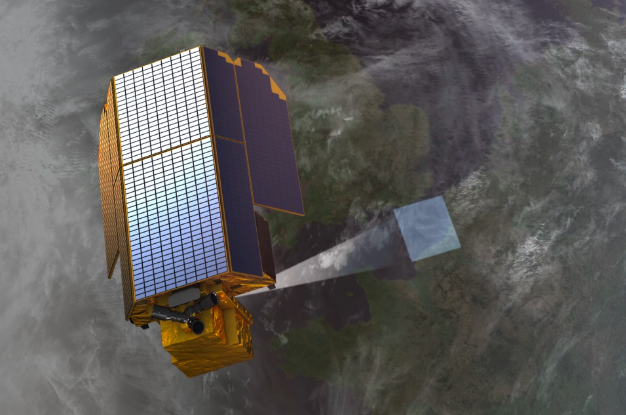
A new look for a UK-led mission that will set a new benchmark to detect change in Earth’s climate system has been unveiled as part of Earth Information Day at COP26.
TRUTHS, which stands for Traceable Radiometry Underpinning Terrestrial- and Helio- Studies, will provide a gold standard reference for satellites observing the Earth, Moon and Sun.
Conceived by the UK’s National Physical Laboratory (NPL) and funded by the UK Space Agency, TRUTHS is being developed by the European Space Agency (ESA). The satellite will be built by the UK space industry led by Airbus UK, along with partners across Europe, including Greece, Switzerland, Romania and Czech Republic, who have also provided funding for the mission.
Beth Greenaway, Head of Earth Observation and Climate at the UK Space Agency, said: “The UK-led TRUTHS mission is making significant progress and we can now unveil more details about what it will actually look like. The mission will play a vital role in improving how we monitor climate change using satellite data and support the decisive climate action which global nations are negotiating at COP26.”
The ground-breaking mission will create a ‘climate and calibration observatory in space’ which will reduce uncertainty in the Earth observing data and will set a new benchmark to detect change in Earth’s climate system. It will build confidence in climate action providing an enabling element of a Space-based climate observing system tied unequivocally to international standards.
In addition to providing this benchmark climate data, its orbit allows its measurements to be directly compared with other missions when their orbit crosses, as shown in the new material released today.
Dominique Gillieron, Head of the Earth Observation Research Mission at the European Space Agency said: “Building on its experience of multiple previous Earth Observation missions, ESA leads the preparation phase of TRUTHS mission towards its final endorsement by end of 2022 at the ESA ministerial conference. TRUTHS will be a perfect complement to the current planned Earth Observation missions providing unprecedented radiometric accuracy.”
When there is uncertainty in data it is difficult to make decisions. This is especially true for climate as very detailed resolutions and long-term records are needed to determine a climate change signal above the natural variability in the weather and climate. TRUTHS is providing the confidence to allow both existing and new missions data to be harmonised and used to make trusted decisions related to climate adaptation and mitigation strategies. It will provide the reference point to help assess progress of these actions and their impact on society.
The early design phase of the TRUTHS mission has been validated; an important milestone achieved by the TRUTHS consortium as they now move to the detailed design phase.
TRUTHS will provide information, which will be of specific importance to the global south and areas where the in-situ, ground-based infrastructure is most challenging and difficult to provide reliable information, and where remote sensing facilitates are crucial to ensuring a rapid response to adapt.
Professor Nigel Fox, UK TRUTHS Mission Scientist, NPL said: “TRUTHS meets calls from the world’s satellite and climate community for robust high accuracy SI traceability. A recent publication from the Committee on Earth Observation Satellites has highlighted the urgency for improved accuracy of observations from space, to help ensure our actions are having the desired impact.
“Although TRUTHS is led by the UK its outcomes and objectives are truly global in nature. As the satellite moves through these important phases, many of those who will eventually benefit from the data may only just be starting school and I hope missions like TRUTHS will inspire them to pursue careers in this exciting sector.”
Justin Byrne Head of Earth Observation and Science at Airbus Defence and Space UK said: “TRUTHS is an important mission as it will provide the gold standard of calibration for space-based Earth observation – a kind of ‘standards laboratory in space’. With TRUTHS we also have the opportunity to further develop important areas of industrial capabilities across the UK space sector.”
image: Artist Impression of TRUTHS – Credit: ESA and Airbus
If you would like to join our community and read more articles like this then please click here.







